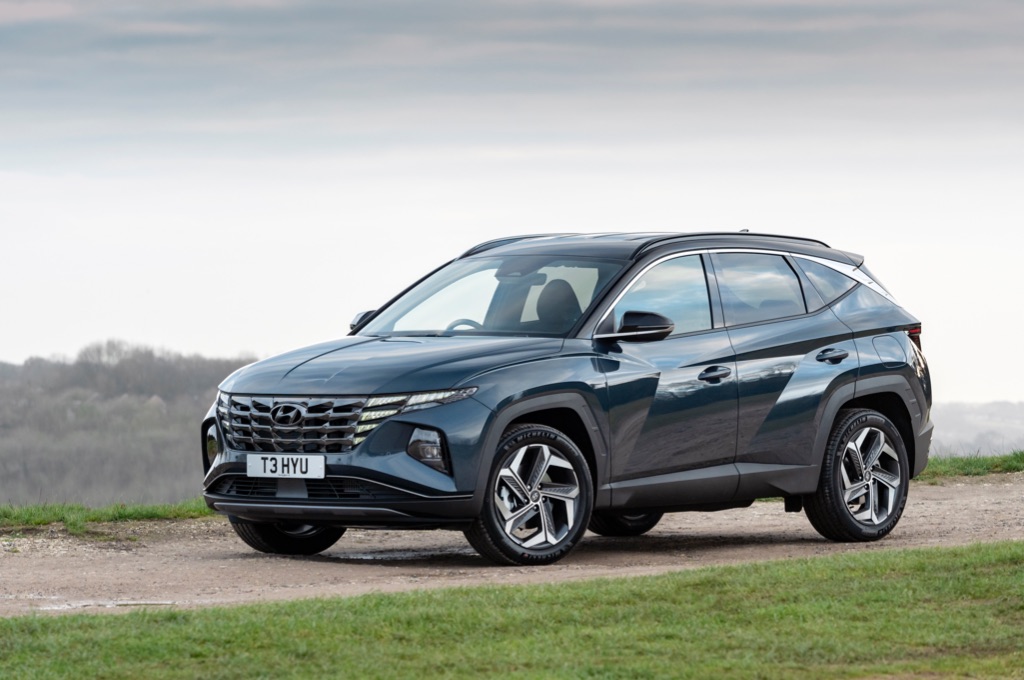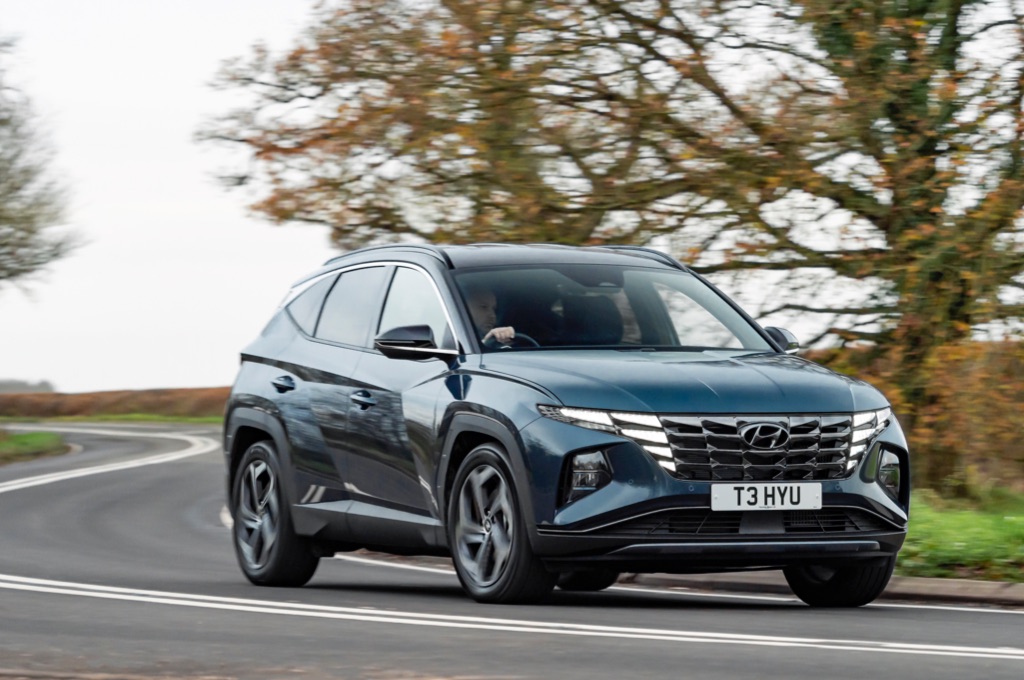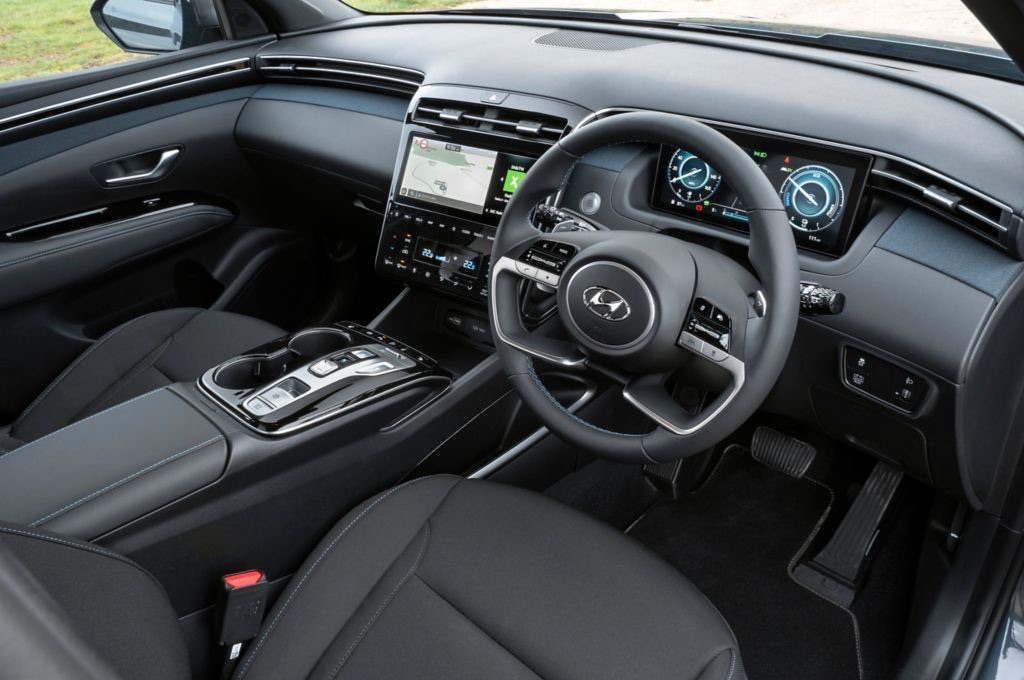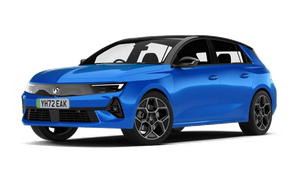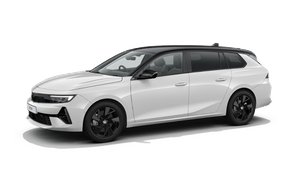Sold in mild, full and plug-in hybrid flavours, there’s certainly lots to choose from. But with almost 40 miles of EV range and a 12% BIK rate from its resultingly low emissions, we’ve focused on the range-topping Tucson Plug-in Hybrid here.
You’re also looking at one of the world’s most popular SUVs and a bestseller in Britain. The Tucson was the sixth biggest selling car in the UK in 2023, just over a thousand sales behind the monstrously popular Tesla Model Y. Hyundai has impressed us a lot during its rise from budget brand to premium player in the last couple of decades; securing so many sales in one of the most hotly contested corners of the market must rank right up there.
Range, battery & charging
The battery is a decent size, at 13.8 kWh, so yields 38 miles of claimed emissions-free range. Reckon on this being closer to 30 miles in the real word, but that’s still more than enough for many drivers’ commutes. While some plug-in hybrid rivals are starting to offer DC fast-charging, the Tucson only offers up to 7.2kW of AC charge – figure on fully charging in just under two hours if you’re wringing out that figure to its fullest.
We’d prioritise a slower, overnight charge at home, though; using AC chargers on the move doesn’t represent brilliant value for money on this occasion. The more expensive providers will top up those 30-odd miles of EV range at a higher cost than a gallon of fuel. And when the Tucson typically returns around 40mpg with the battery at its lowest level, the Plug-in Hybrid’s running costs take a hit if you’re not charging at home. If you lack the ability to top up overnight, we’d be more inclined to recommend the four grand cheaper Tucson Hybrid. It can’t be plugged in but ought to clock around 40mpg too – just with less weight and complication.
Practicality & boot space
The Tucson Plug-in Hybrid offers a lower luggage capacity than its range-mates, but thankfully only by a smidgen – at 558 litres of boot space with the rear seats up and 1737 with them folded, it’s only a couple of per cent down on other Tucsons and streets ahead of VW’s new Tiguan eHybrid, which only claims 490/1486 litres. Hands-free boot opening comes as standard on more plush trim levels; normally we’d see such things as a gimmick, but the Tucson’s hefty tailgate will certainly work your muscles without it.
Move forward and you’ll find plenty of room in the back. The rear seats recline and can be fitted to favour either boot space or passenger comfort. Adults should feel comfy in the back, though occupants up front will need to crank their seat height up a notch if those in the rear are to snugly tuck their feet underneath. Leg and headroom are generous throughout the car, though, while the materials are all pretty plush – especially if you’ve gone for the bougier N Line trim with its sports seats and natty fabric trim inlays.
While its 1350kg towing capacity sits lower than some competitors, not least that new Tiguan eHybrid, the Tucson has proved an award-winner for its hauling and should still manage most caravans, its strong power output and 4WD layout making for a capable towing machine. A trailer stability assist system is standard on all models, too.
Interior & technology
Hyundai has long majored on tech and the Tucson is no different. All spec levels pair up two 10in display screens, one housing the configurable LCD dials in front of the driver and the other sitting in the middle and controlling all other functions as well as hosting high-resolution smartphone mirroring. Though the stock Hyundai infotainment is slick and easy to navigate too, and even includes its own voice memo app that could prove handy for making notes or shopping lists on the move in a safe manner. We’re venturing into the Skoda ‘simply clever’ territory of useful flourishes that others overlook.
There’s a wealth of USB ports front and back plus a wireless charging pad for all trim levels above entry-level ‘SE Connect’, which doesn’t offer the plug-in powertrain anyway. There’s a heap of active safety equipment across the board, with perhaps the most natural and least pestering lane-keep assist we’ve tried in a long time. A facelifted Tucson arrives later in 2024 and there’s a good chance its level of interruption will be greater as the increasing pressure of safety test regulation heightens the strength of speed-limit and lane-keep warnings (and how easily they can be turned off). Perhaps it’s worth nipping in and getting a good deal on an outgoing car if this concerns you.
Driving & performance
The Plug-in Hybrid’s on-paper stats are certainly strong, its 1.6-litre turbo petrol engine combining with an electric motor for peak output of 261bhp. That’s what a modern Golf GTI produces, and here it drives all four wheels for a 0-62mph time that’s almost in hot hatchback territory at 8.6 seconds (though it’s worth pointing out the less powerful but much lighter Tucson Hybrid manages the sprint in 8.0secs flat).
You won’t wring out the full potential of the powertrain too often if you’re hoping for maximum efficiency, but with the help of a smart six-speed automatic transmission, progress can be brisk and refined. Even in EV mode – when power is limited to the 90bhp peak of the e-motor – the car scuttles through traffic and out of roundabouts with ease.
The engine and motor work well together, and their handover is usually smooth, though sustained inclines can occasionally fox the powertrain. Sticking the car in the sportier of its two drive modes (dubbed Eco and Sport) keeps the engine running and mitigates this. You can also adjust the hybrid operation through EV, Hybrid and Auto modes. We found it hard to tell much of a difference between the latter two in everyday driving, so keeping it in Auto makes most sense. In all modes the car retains a sliver of battery power to ensure maximum acceleration is always possible on demand.
You can’t adjust the brake regen, which seems a shame, but the default level is pretty intuitive and allows for smooth acceleration and braking. The brakes themselves could be better suited to the task of slowing the Tucson’s not-inconsiderable 1818kg, and the pedal needs a lot of force – especially as you decelerate from motorway or dual carriageway speeds – but you’ll quickly adapt.
Everything else is impressive, and the car borders on fun to drive. Hyundai acquired lots of European talent over the course of the last decade as the quality of its cars has soared, and some former BMW names on its roster have ensured its high-performance N models – including the dazzling new Ioniq 5 N electric hot hatch – feel like class-leaders. Some of that nous has trickled down to the humble Tucson, so while it still rolls and leans a little in turns, it handles very tidily and works all four of its wheels evenly with higher cornering speeds.
Not how a car like this is truly designed to drive, but it’s nice to know it’s possible – and it means the Tucson feels well within its comfort zone lower speeds, too. A bit of lean helps its suspension retain a level of suppleness a handful of rivals can only dream of. This is a very refined car and its ride is compliant across all surfaces, even on its optional 19in alloys. Just as a family SUV should be.
Running costs & pricing
The wonder of official WLTP testing means Hyundai claims similarly dreamlike economy figures to its rivals; the Tucson Plug-in’s 201.8mpg and 31g/km of CO2 emissions are clearly unrealistic for most use cases, but they do ensure a 12% BIK rate and you’ll get closer to achieving them the more you can cheaply charge it to prioritise battery use. We managed around 70mpg in mixed-use, longer-distance driving while frequently recharging; this dropped to around 40mpg in similar conditions with the battery kept at its minimum level.
Prices start at £41,930 for a Tucson Plug-in Hybrid in either Premium or N Line trim, which brings 18 or 19in alloys (respectively) plus LED headlights, front and rear parking sensors and a reversing camera. Ultimate spec costs £44,630 and adds a load of active safety kit, smarter stop and go cruise control, a punchier premium stereo and the electric boot release.
The price hike over a standard Tucson Hybrid fluctuates between trim levels but is typically around £4000, so it’s worth knowing how much you’ll be able to charge at home or work before making the jump, though you’ll soar to a 31% BIK rate with the regular car.
All Plug-in Hybrids sit in insurance group 21E – a mite north of the mild and regular hybrids – while Hyundai’s stocky five-year, unlimited mileage warranty comes as standard across the range.
Verdict
Competition in the SUV sector is fiercer than ever, not least among the hybrid variants that ensnare so many company car users. The Tucson Plug-in Hybrid offers strength across the board: bold looks, smart tech, lots of room and tidy handling, as well as a decent punch of performance when you need it.
Just make sure you’ll reap the tax benefits and can charge it overnight to make most efficient use of its powertrain – if not, then lower rungs of the Tucson ladder might just serve you better. Either way, Hyundai now offers much more than a chunky warranty in this most competitive of markets. No wonder it sells so many.









